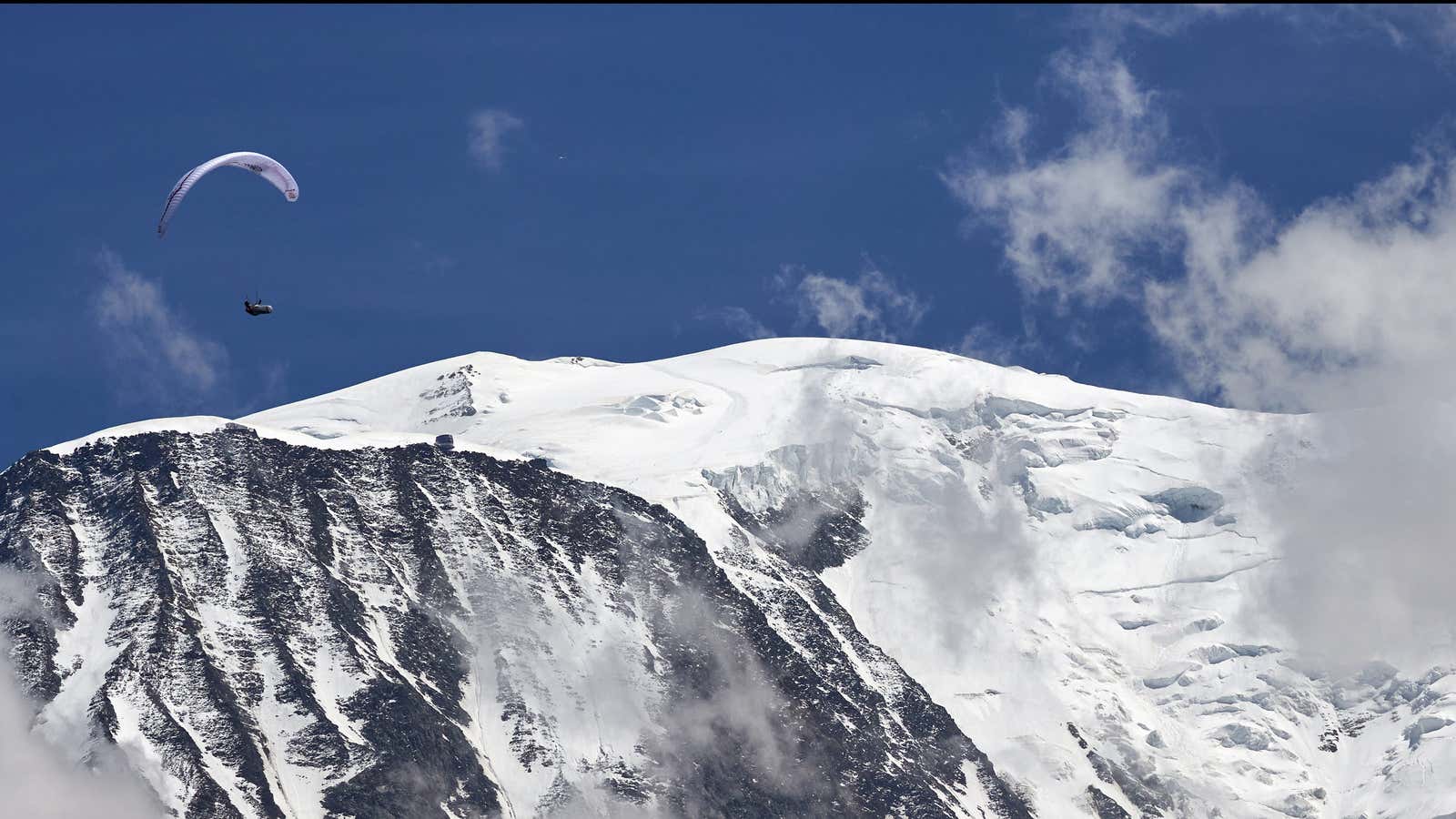In 2013, a French mountain climber ascending Mont Blanc found something besides stunning views: a box containing about $340,000 worth of precious stones.
The gems—an assortment of emeralds, sapphires, and rubies—are believed to have been on an Air India flight that crashed on the mountain in 1966, according to the Agence France-Presse (AFP).
The climber handed over the gems to the authorities, as required by French law. After efforts to find the rightful owners of the gems were unsuccessful, the climber, who was unnamed by the AFP, was rewarded with half of them. The government in Chamonix, France, will retain the other half.
Remains from a famous Air India crash from 1966
At 15,777 ft, Mont Blanc is the highest mountain in western Europe and straddles the border between France and Italy. The mountain has claimed two separate Air India flights, one in 1950 and the second in 1966. All 117 passengers and crew members were killed in the 1966 crash of the Kanchenjanga, a plane named, somewhat ironically, for the world’s third-highest mountain.
The plane was bound to New York from Mumbai over multiple stages, and crashed on its way to Geneva from Beirut. Among the passengers was Homi Jehangir Bhabha, a physicist regarded as the father of India’s nuclear program, which gave rise to conspiracy theories about the crash. Global warming means Mont Blanc’s Bosson glacier is receding, which has exposed more of the wreckage from the 1966 crash. In 2019, Indian prime minister Narendra Modi honored the dead from both crashes.
The discovery of precious cargo from a mountain plane crash is unusual but not unheard of. In the US, a small plane loaded with 6,000 pounds of marijuana crashed in California’s Sierra Nevada mountains above Yosemite National park in 1976, supplying enterprising climbers with free weed for years.
